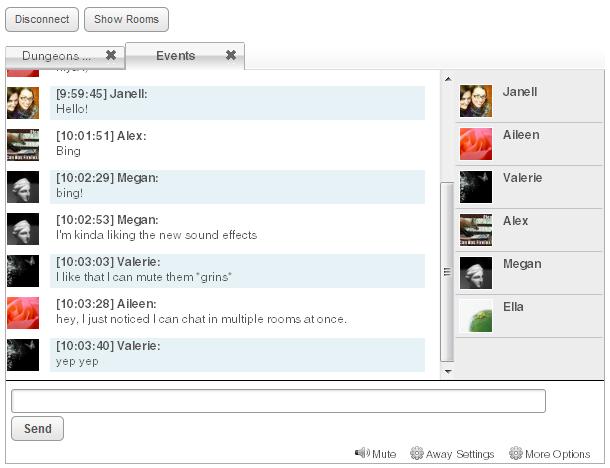Since the spring of 2007, ONEsite has offered chat as an optional part of its social networking solution. The chat system was designed in house and fully integrated into the platform. Working closely with the needs of new and existing clients we have updated our chat to add a multitude of new features.

Some of the key highlights of Chat 3.0 are listed below.
- Premier:
- Fully customizable HTML5/JavaScript UI
- Network level and group level chat supported
- Moderators Only:
- Chat logging
- Ability to grant granular user permissions
- Multi room support
- Moderated chat rooms supported
- All Users:
- Set "away" messages
- Ability to send private messages
- Ability to join multiple rooms
- Timestamps
- Sounds and alerts
- Mute button
Versatile Design
Chat 3.0 was designed to be completely versatile - both on the display layer and in the way our clients interact with it.
- HTML5/JavaScript UI
- Extensible Front-End Code
- Transport layers to talk to the chat server
- All actions of the service fire events
- All events can be overwritten
New HTML5/JavaScript UI
One of the most anticipated changes in the new chat system is the ability to completely customize the look and feel of the chat and have it fit seamlessly into your brand's designs.
Extensible Front-End Code
Write your own plugins to customize our chat system to perform exactly as you envision it. All methods within the chat both fire events and allow you to override them. JQuery is suggested for easy event access.
Supported Languages
Any extension that manipulates data sent back from the transport layer is acceptable. You can write a plugin in JavaScript and then it would have access to anything the normal chat application can do.
Mix and Match Plugins
ONEsite offers a variety of plugins to extend the basic chat functionality for our clients.
- User Flagging
- Avatars Inline
- Automatic sending of away messages
- Show moderators a custom interface
- Sound notifications when a message is received
Mobile Chat Supported
The Chat 3.0 system relies on transport layers to pass data from the application to the chat server. While the current transport layer is written in Flash, it is easily exchanged for Web Sockets to allow it to function in mobile browsers.
|

|